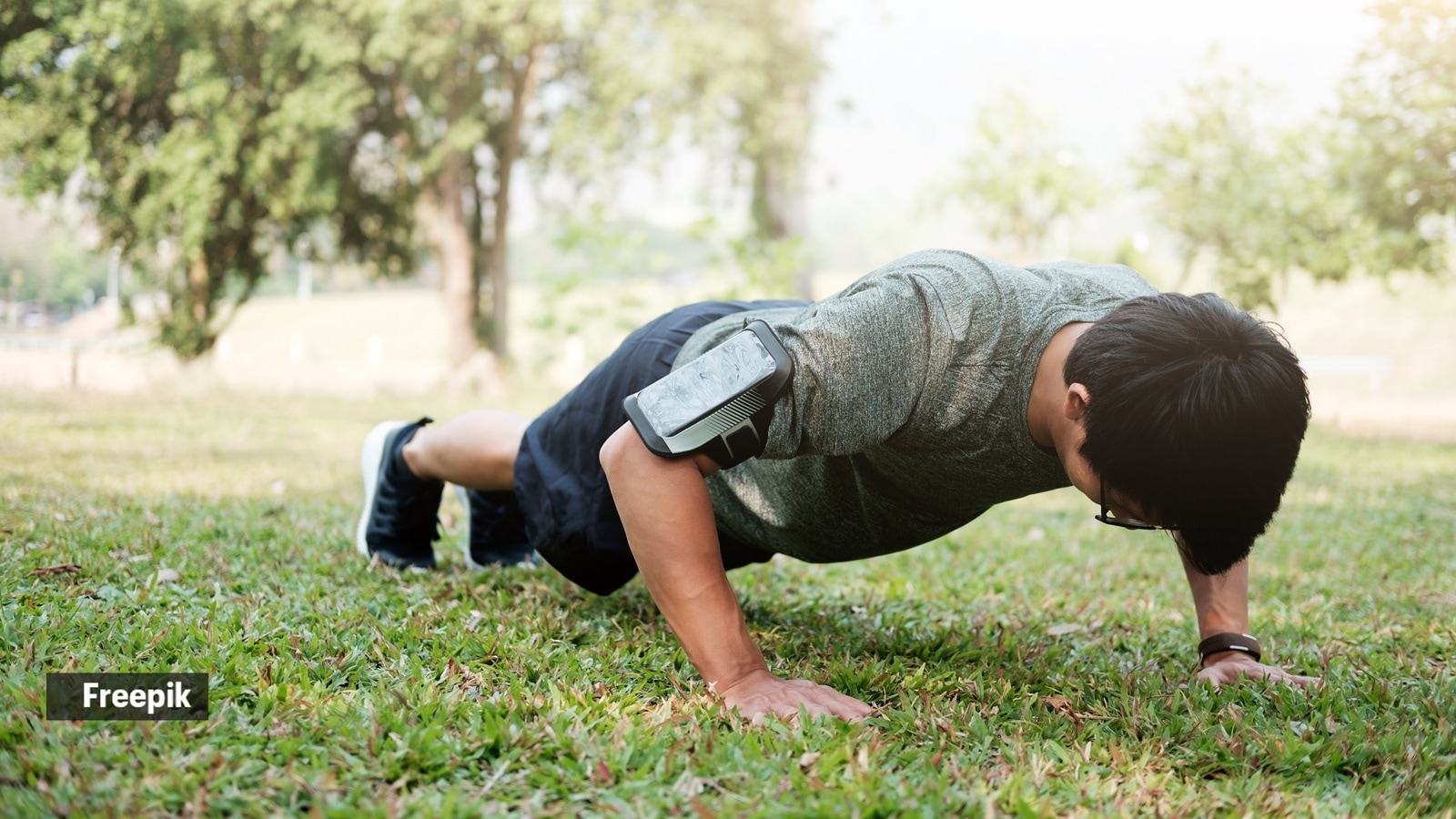Push-ups make for an excellent exercise that works the upper body, core and glutes, including the chest, shoulders, biceps, and triceps. A kind of calisthenics exercise that utilises your body weight as resistance, pushups are useful for enhancing upper body strength. In a recent Instagram post, Soha Ali Khan walked us through 5 step guide to ace push ups as a beginner:
1. Wall Push Ups
2. Incline Knee Push Ups
3. Knee Push Ups
4. One Knee Push Up
5. Push Up
“We all now know push-ups aren’t just for the boys! If you’re trying here is how you can build up to it in some key steps… 💪🏻 Start on your knees, then incline, then full — keep going! And why, you ask? Push-ups build upper body power, core stability, and bone health — all in one move – chest, shoulders, triceps and core all engaged!” shared the Rang De Basanti actor in the caption of her Instagram post.
Push ups mimic the movement pattern of a flat bench press, making them an ideal alternative to conventional weightlifting exercises. If full pushups are challenging initially, modify the exercise.
Story continues below this ad
 Keep your form straight (Source: Freepik)
Keep your form straight (Source: Freepik)
“Perform inclined pushups by placing your hands on an elevated surface, such as a bench or step. This reduces the resistance and gradually builds strength,” fitness expert Garima Goyal told indianexpress.com, sharing a quick guide to help you start your journey:
- Start in a plank position with your hands positioned wider than shoulder-width apart.
- Activate your core muscles by drawing your navel toward your spine.
- It is pertinent to inhale as you lower your body toward the floor and exhale as you push back up.
- Keep your elbows close to your body as you lower yourself.
- Lower your chest to a point where it is just above or lightly touching the ground.
- Maintain a neutral head position by looking at a spot on the floor about a foot in front of you.
- Focus on muscle engagement throughout the movement.
- Perform push-ups with control, avoiding rapid or jerky movements.
Common mistakes to avoid
When doing push ups, one of the biggest mistakes is prioritising quantity over quality. “Many people rush to increase reps without building the proper foundational strength or focusing on form. This often leads to compensations like sagging hips, flared elbows, or incomplete range of motion, which not only reduces effectiveness but can lead to injury,” said Dr Vajalla Shravani, MPT, fitness and pilates expert at Tone30 Pilates.
To improve safely, she suggests that it’s helpful to break push ups into progressions: start with wall or incline pushups, then move to knee pushups before graduating to full pushups. Strength training that targets the chest, shoulders, triceps, and core can also complement your pushup practice.
“Another overlooked aspect is recovery. Muscles need rest to grow stronger, so pushing through fatigue daily might backfire. Aim for structured training, perhaps 3–4 sessions per week, with rest days and mobility work in between. Over time, this builds both performance and longevity,” concludes Dr Shravani.
Story continues below this ad
Who should avoid doing pushups?
“Individuals with shoulder injuries should avoid performing direct push ups and rather focus on a progression that slowly builds strength in the shoulder area. This minimises the risk of aggravating the injury. Similarly, individuals with lower back injuries should proceed with caution when attempting planks. They need to follow a progression that gradually strengthens the core muscles without putting extreme strain on the lower back,” she said.
Planks and push-ups are two popular bodyweight exercises that mainly target the core muscle. Both can be done nearly anywhere as neither do they require any equipment, or much space. But is one exercise better than the other when it comes to achieving your fitness goals? Find out here.

